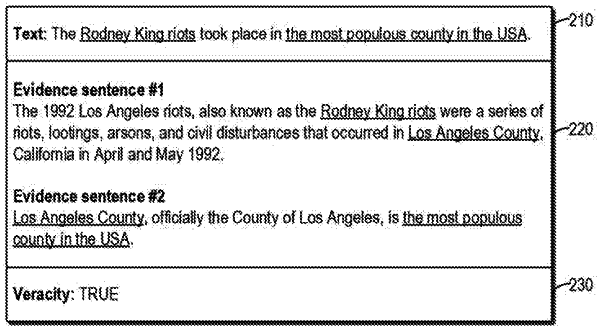| CPC G06F 40/30 (2020.01) [G06F 16/212 (2019.01); G06N 3/08 (2013.01)] | 20 Claims |

|
1. A computer-implemented method, comprising:
obtaining, from an evidence database, a set of evidence sentences associated with a text to be fact checked, the text to be fact checked received as input by a computing device;
constructing, by the computing device, a first graph indicating semantic information of the text and a second graph indicating semantic information of the set of evidence sentences;
inputting the first graph and the second graph into a graph-based pre-trained model to generate text word representations, evidence word representations, and a joint text-evidence representation;
generating, by a graph convolutional network, node representations for the text word representations and the evidence word representations;
determining, by the computing device, a veracity of a statement in the text by evaluating the node representations and the joint text-evidence representation using a graph attention network; and
generating an output for transmission that includes the veracity of the statement.
|